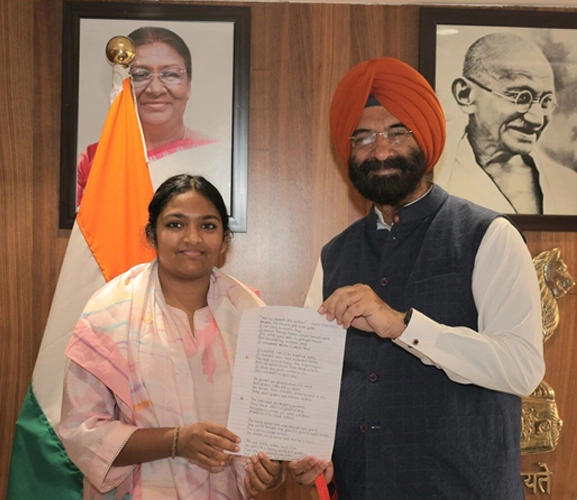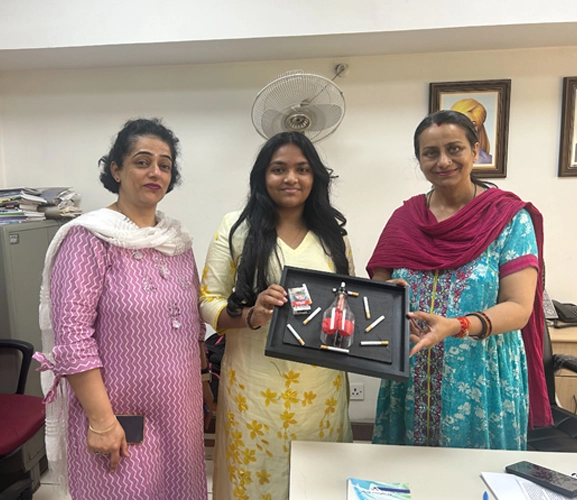Pathways School Gurgaon
Mehr Dhawan
Art, Action, and Advocacy: A Young Changemaker’s Journey for the Planet
Q1. Please share a brief introduction about yourself – when did you join PSG, what interests did you develop over the years.
I joined PSG in Pre-nursery, and it has been like a second home to me. Over the years, my interests grew from art, poetry, and design to a deep passion for environmental advocacy. From my first plantation drive at age 3 to learning about SDGs, PSG nurtured my creativity and values beyond academics, motivating me to “Be the Change.”
Q2. What inspired you to start your environmental advocacy journey at such a young age?
Seeing pollution around me—plastic waste, polluted air, and climate change news—deeply affected me. At 3, my only wish was to plant trees, and with my mother’s support, I planted thousands of Lakshmi Taru trees. Early on, I used posters, slogans, and art for awareness, and later guidance from mentors strengthened my advocacy. Starting young gave me conviction that small steps can create big change.
Q3. Can you tell us more about your artwork and poetry that you presented to Hon’ble Minister Manjinder Singh Sirsa?
I presented “Cry Beneath the Surface”—an art installation and poem highlighting marine pollution—using a fishbowl filled with resin, plastic, and miniature fish. Hon’ble Minister Sirsa not only appreciated the work but also displayed it in his office and encouraged me to create awareness through articles and infographics. The project reflected how art and poetry can amplify environmental messages.


Q4. What was the concept behind “The Silent Fire” installation, and what message did you hope to convey?
“The Silent Fire” depicted bleeding lungs on a black canvas made from recycled materials. It symbolized how smoking and air pollution silently destroy our health and environment. The installation and poem aimed to remind people that if we ignore this “silent fire,” it will become unstoppable.
Q5. How do you think young people can make a meaningful impact on environmental issues?
Young people bring creativity, energy, and fresh ideas. By spreading awareness through art, technology, and daily choices like reducing waste, we can inspire change. Leading with a mindset of responsibility ensures our actions ripple outwards—protecting the planet becomes not just a choice, but a way of life.
Q6. What has been the biggest challenge you’ve faced in your environmental advocacy work, and how did you overcome it?
The biggest challenge was convincing people that individual actions matter. I overcame it by setting examples through my projects and installations. With encouragement, appreciation, and more people joining in, I realized that “Yes, we can” and that every effort counts in creating a culture of change.

 Baliawas Off Gurugram Faridabad Road, Gurugram – 122003
Baliawas Off Gurugram Faridabad Road, Gurugram – 122003








































